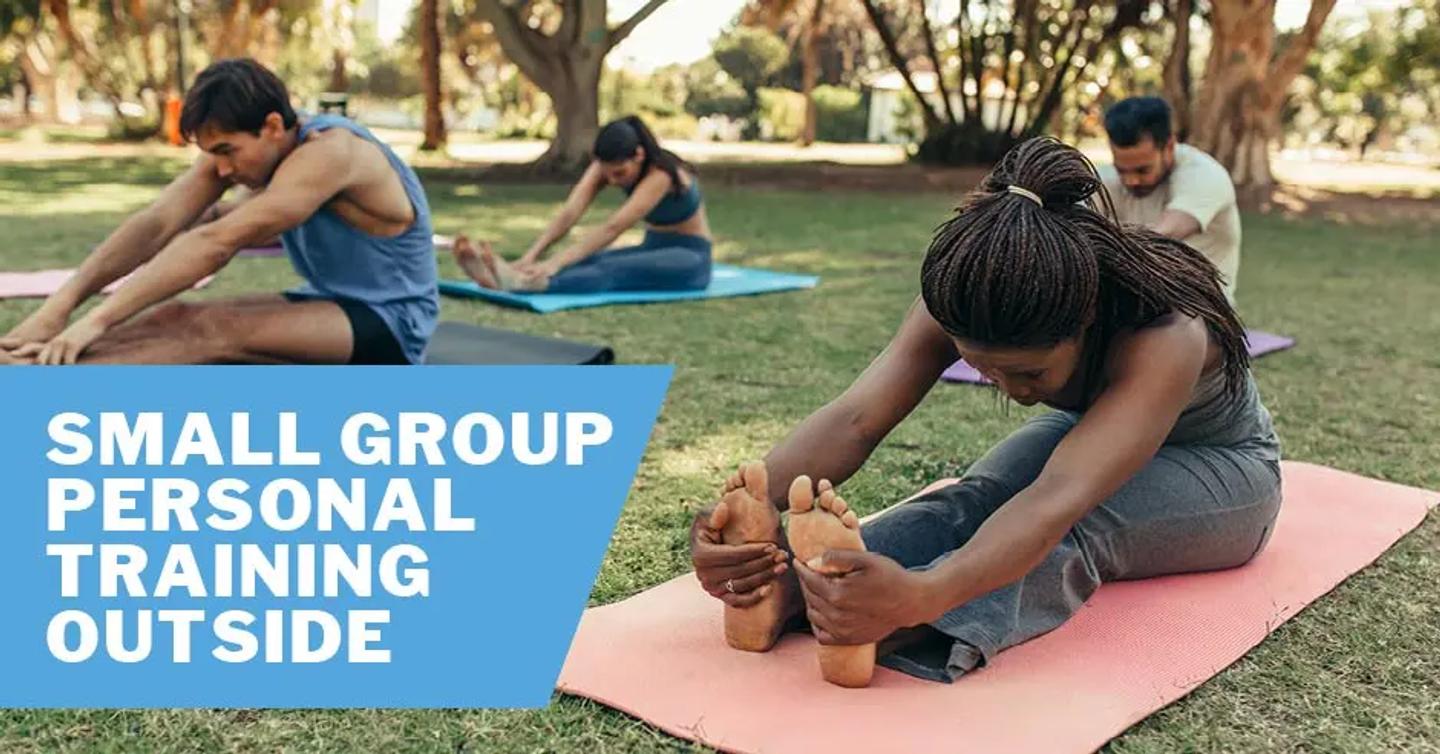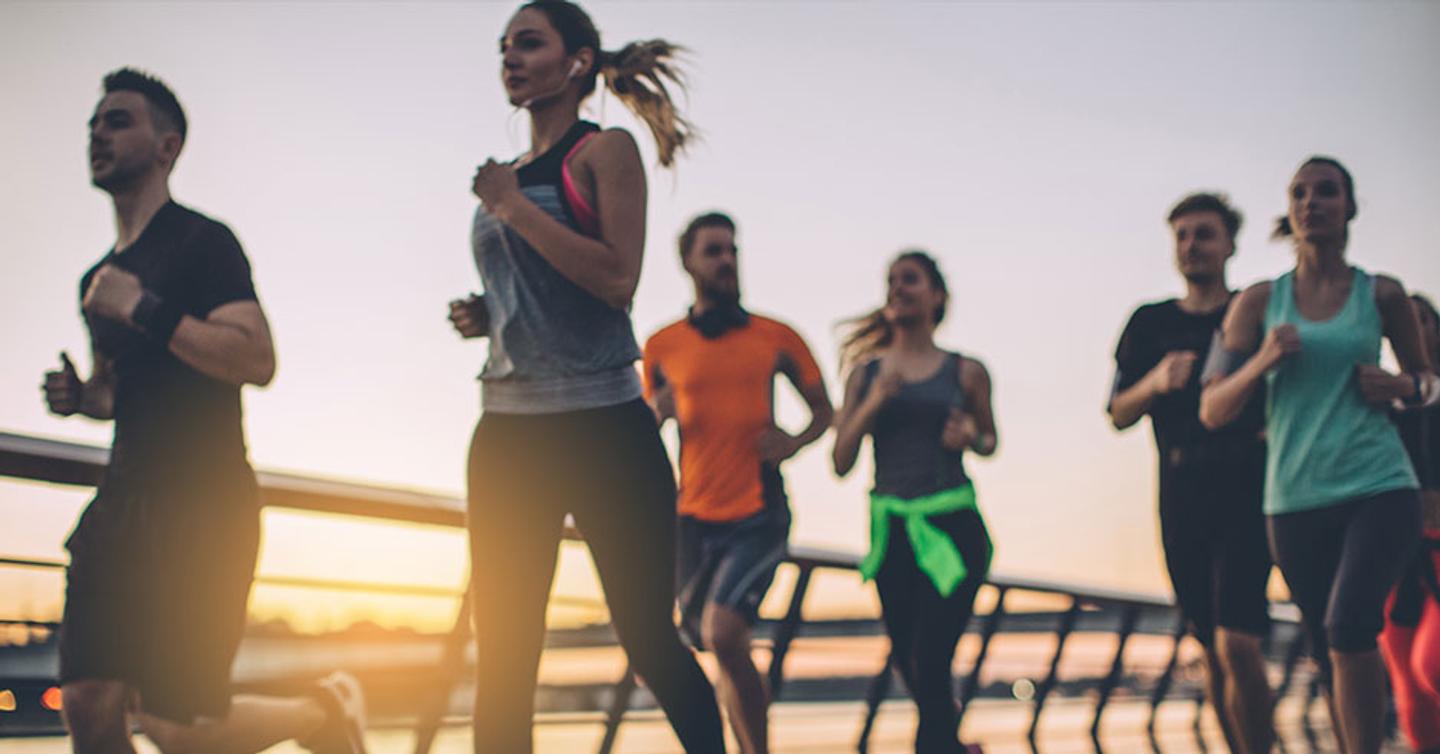
More Money, Less Time: Outdoor Group Training Essentials
Reading Time: 4 minutes 28 seconds
BY: ISSA
DATE: 2020-09-14
The initial closures or restrictions many gyms faced at the start of the COVID-19 pandemic sparked a need for personal trainers to get more creative with their training sessions. Switching gears is not always an easy thing to do, but as fitness professionals, it provides an opportunity to think outside of the box.
Many experts have communicated that fresh air and exercise are two important components of staying healthy both in general and during the pandemic. So, fitness professionals have an incredibly important role in helping manage stress levels and keeping people active and healthy during this time. Follow along as we discuss how to move your personal training skills from the gym to the outdoors while still trying to keep your clients safe.
Find a Spacious Location
Although many gyms may be closed or have restrictions, there are still many parks, sports fields, and large yards that are open. Another potential location is a big empty parking lot—perhaps your closed gym's parking lot.
Be sure to get check with the city's recreation department, schools, or homeowners to get permission and to determine if there are fees or permits required to use any of those open spaces.
Things to consider:
Client location: Pick a location convenient to most of your clients. If the location is too far, you may not get as much participation as you would like.
Social distancing: Measure your space to determine how many clients can fit while maintaining at least six feet between clients. Consider using cones to help client space themselves accordingly.
Ground cover: If you're working in a parking lot or on cement, remind clients to bring a mat or towel. It can provide a small layer of cushion when completing exercises where any body part aside from their feet is on the ground.
Plan for Minimal or No Equipment
For the sake of simplicity and to avoid transferring germs, fitness bootcamps should have little to no equipment. Ideally, you will want to consider constructing a workout with just bodyweight or calisthenics. You can create a high intensity interval training (HIIT) class, Tabata style workout, or alter the reps or tempo of simple bodyweight movements to develop a fun and effective group training session.
Things to consider:
BYOE - Bring Your Own Equipment: Ask your client to bring their own equipment whenever possible (jump rope, bands, etc.). This means fewer items you'll have to cart around and clients are less likely to spread germs.
Provide equipment: If you have enough equipment for each client in the class without sharing, you could provide the equipment. However, it will be important to follow strict cleaning protocols of all equipment after each session.
Modifications: When running a small group training class, you will very likely have participants with a variety of different fitness levels. So, it will be important to provide modifications to all exercises to help support everyone in the group.
Stay Organized
It is important to maintain professionalism and structure.
Have a set schedule you can communicate to clients.
Set up a system for payments.
Know your class maximum to ensure there is enough space for everyone.
Have your paperwork ready for clients to sign (liability waivers, etc.).
By having these essentials planned out, it'll be easy to get into a routine. And once you reach the maximum number of participants with confirmed payments, it will be a breeze to open another group training session for another time.
Things to consider:
Check with your insurance or legal counsel: You will want to ensure you are covered for liability.
Transition to online documents: To keep things contact-free, explore using an electronic system to manage and organize client paperwork. Clients can fill out their waivers before they get to class.
Transition to online payments: Handling cash or credit cards isn't always ideal—consider using a payment platform (Venmo, PayPal, etc.) for a contact-free transaction.

Spread the Word
Trainers may need to adapt to get the word out about their personal training services. If you already have a base set of clients that you can work with outside the gym, you just need to find convenient times and locations to work with them. Also consider asking for referrals or a "bring a friend for one free class" types of promotions as many people are looking for ways to navigate their fitness journey without going to a gym.
Things to consider:
Neighborhood: If you are looking for new clients, you might be able to look no further than your own backyard. Your neighbors may all be looking for a fitness solution. Hang up flyers around the neighborhood and start talking to neighbors about their interest in an outdoor workout.
Local businesses: Can you teach an outdoor yoga class for a group of professionals during their lunch break? Check with local businesses to see if you can run a lunchbreak bootcamp or group meditation to help with stress reduction. Although many people are working from home, there are still professionals in the office who could benefit from this.
Watch the Weather
Another variable to consider when using an outdoor space is the weather. From temperature to rain to wind, make sure you are aware of the challenges that go along with the outdoor elements.
Things to consider:
Water: Remind all participants to bring their own water. It is important to stay hydrated, especially during the summer months.
Attire: Early morning classes might be much cooler than lunchtime sessions. Remind clients to dress accordingly.
Rain: Training in the rain can be a recipe for injury. Have a back-up plan or an efficient way to communicate cancellation to your clients in the case of rain.
Summer heat: While you want to structure your bootcamp workouts around your clients' schedules, try to skip the heat of the day. Early morning or early evening are often the best options for comfortable temperatures.
As you use your creativity and resiliency to adapt to a new format for fitness, remember the most important thing is client safety. So, make sure you enforce proper protocols so that you can continue to train clients and clients can continue their fitness goals while reducing the risk injury or sickness.
Motivated by the collective energy of a group? Maximize your time, increase your income, and expand your personal training business with small group fitness and outdoor bootcamps. Become the best of the best with ISSA's Group Fitness Certification!
Featured Course
ISSA | Group Exercise Instructor
The ISSA Certified Group Exercise Instructor course is the most well-rounded program available, educating trainers on how to teach up to 12 formats in less than 6 months - for one easy price point. Take your fitness employability to the next level as a 12 in one instructor!